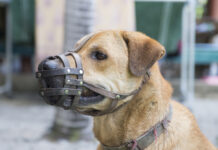Last Updated on November 10, 2024 by Dogs Vets
Key Highlights
- Layering horse rugs is essential for keeping your equine friend comfortable during the colder months.
- By using a system of base, mid, and outer layers, you can adjust your horse’s warmth as needed.
- Always consider the individual horse’s breed, age, health, and activity level when choosing rug combinations.
- Proper fit is crucial, so ensure your horse’s rugs fit snugly without restricting movement or causing discomfort.
- Regularly check the weather forecast and adjust rug layers as needed to prevent overheating or chills.
Introduction
As winter comes, it is very important to keep your horse warm and comfy. Buying good quality horse rugs is crucial. Knowing how to layer them well helps protect against the cold too. You should have strong turnout rugs for cold days and warm stable rugs for extra comfort. This way, you can adjust your horse’s clothing to fit the weather. Also, remember to have essential repair services ready to keep your rugs working well all season!
Essential Steps for Layering Horse Rugs in Winter
Layering horse rugs might look easy, but it requires some planning. This helps your horse stay warm and dry without getting too hot. The idea is to use a system like we do with our clothes. You should start with a comfy base layer that lets the air in. If it’s colder, add an insulating mid-layer. Finally, finish with a waterproof and windproof outer layer.
In addition to rugging, don’t forget about other protective gear like boots. If your horse is traveling or in transit, consider adding the best horse travel boots to protect their legs from injury. These boots provide essential protection, particularly during long trips, helping to prevent damage from bumps or knocks.
Keep in mind that every horse is different. Many things can affect the best way to rug your horse. Factors like breed, age, health, coat thickness, and whether they are clipped or have a natural winter coat are very important. Always watch how your horse acts, and change the layers as needed. This will help keep your horse comfortable and healthy during the winter.
Choosing the Right Base Layer for Breathability and Warmth
The base layer is very important for a good rugging system. It protects your horse from the cold. Choose a lightweight and breathable material. This will help air move and stop moisture from building up. Keeping your horse dry and comfortable is key.
Look for fabrics like moisture-wicking fleece or soft cotton blends. These materials remove sweat and stop your horse from feeling damp and cold, especially when they are active. A good base layer helps keep your horse’s body temperature steady. It keeps them warm and cozy under the other rug layers.
When you pick a base layer, think about the temperature and your horse’s activity level. On warmer days or for horses that get too warm, a lighter base layer is fine. But on colder days or for horses that get cold easily, a slightly warmer base layer can make them feel better.
Adding a Middle Layer for Insulation During Colder Nights
A middle layer is not always needed, but it can be a big help on very cold nights or for horses that need more warmth. Think of it like your horse’s “sweater” or “jacket.” It adds an extra layer to keep heat in and help their body stay warm.
You can find different materials and thicknesses for mid-layer rugs. This makes it easy to choose how warm you want your horse to be. Quilted rugs with polyfill or fiberfill are popular. They give great insulation without being too heavy.
The main job of the middle layer is to keep your horse warm when it gets really cold. Think about what your horse needs and pick the thickness of the mid-layer based on that. Some horses might only need a thinner mid-layer, while others might need a thicker one for the best comfort.
Selecting an Outer Waterproof Rug for Protection Against the Elements
The outer rug protects your horse from the cold winter weather. It works like a shield, keeping them dry from rain, snow, and cold winds. Look for rugs that have a strong, waterproof outside and sealed seams to stop any leaks.
Breathability in the outer rug is very important. It helps heat and moisture escape. This keeps your horse from getting too hot or sweaty. Choose rugs with breathable materials that let air flow while still keeping water out.
When picking an outer rug, think about the denier. Denier measures how strong and durable the fabric is. A higher denier means a tougher rug. This is great for horses that are outside and near fences or other horses.
Choosing the Right Fill Weight for Different Weather Conditions
Horse rugs come in a range of fill weights, measured in grams, which refer to the amount of insulation within the rug. Selecting the appropriate fill weight is crucial for ensuring your horse remains comfortable and warm without overheating.
A lighter fill weight, such as 50g or 100g, is suitable for milder winter days or for horses that are more likely to get warm easily. Medium fill weights, typically ranging from 150g to 250g, are versatile options for colder days or for horses requiring additional warmth. For extremely cold climates or horses sensitive to the cold, heavier fill weights, such as 300g or more, provide maximum insulation.
Here is a helpful guide to choosing the best rug weight:
| Temperature | Rug Weight (grams) |
| 15°C and above | No rug needed or a lightweight sheet |
| 10°C to 15°C | 50g to 100g |
| 5°C to 10°C | 150g to 200g |
| 0°C to 5°C | 250g to 300g |
| Below 0°C | 350g to 450g+ |
Layering Strategically to Prevent Overheating
While it’s important to keep your horse warm in winter, you should also avoid making them too hot. If you put on too many rugs, it can cause them to feel uncomfortable, sweat too much, and even have health problems. Start with lighter layers. You can then add more if it gets colder or if your horse starts to shiver.
Make sure to check what your horse needs. Look at their breed, the thickness of their coat, and how active they are. Horses with thick winter coats, like Icelandic horses or Friesians, usually need fewer layers. On the other hand, horses with thinner coats, like Thoroughbreds or Arabians, might need more.
Keep an eye on your horse’s behavior when they are wearing rugs. If they sweat a lot, seem restless, or look for shade, it might mean they are too warm. In this case, you should adjust the rugs. Always be cautious. It’s better to add layers slowly than to put too many rugs on your horse.
Ensuring Proper Fit for Maximum Comfort and Warmth
A properly fitted rug is very important for your horse’s comfort and safety. A good rug lies flat on your horse’s body. It should not have any wrinkles or tight spots that could create rubbing or discomfort. The front closure should be secure, but not too tight. This allows the rug to fit well without keeping your horse from moving freely.
Check to make sure there is enough coverage around the chest and shoulders. This helps to protect these areas from cold drafts. Pay attention to the leg straps as well. They should be fastened securely so the rug does not slip or shift when your horse is moving. However, these straps should not be too tight, because that can affect circulation and cause pain.
Regularly check your horse for signs of rubbing or hair loss. Areas like the shoulders, withers, and chest are common places for rubs. If you see any problems, think about adjusting the rug’s fit or trying a different size or style.
Paying Attention to the Horse’s Activity Level
Choosing the right horse rugs is important. It depends on how active your horse is during the winter. For horses that exercise a lot, lighter turnout rugs or mesh horse rugs are good. These keep them from getting too hot. For horses that don’t move much or are clipped, you should get quality horse rugs that offer some heat and maybe a hood for extra warmth. By adjusting the layers based on your horse’s activity, you can help them stay comfy and warm all winter long.
Paying Attention to the Horse’s Activity Level
Keeping your horse warm in winter is about more than just putting on layers of horse rugs. You should think about how active your horse is. If your horse moves around a lot, choose lighter rugs. They will keep your horse warm while allowing easy movement. If your horse is less active, you might need thicker rugs that trap heat better. Knowing what your horse needs based on how active they are is important for their comfort and well-being when it’s cold.
Monitor the Weather and Adjust Layers as Needed
Weather can change fast. This makes it important to stay informed and adjust your horse’s rugging. Check the weather forecast often. Pay close attention to temperature changes, wind chill, rain, and humidity.
On mild days, a strong wind can make it feel much colder for your horse. If this happens, think about adding another layer. You could also choose a rug with a higher denier rating. This can help keep out the wind. Wet or humid weather can make it hard for your horse to control its body temperature. So make sure to change the rug layers as needed.
By staying updated on the weather and changing the rugs as needed, you can help your horse feel comfortable. This is important for avoiding feeling too hot or too cold. Adjusting how you rug your horse for changing weather is key for your horse’s well-being in the cold months.
Maintaining Clean Rugs for Optimal Performance
Regular rug cleaning is very important to keep your horse’s gear working well and lasting a long time. Dirt, mud, sweat, and other messes can build up on the rugs over time. This buildup can stop the rugs from breathing properly and repelling water. If the rugs get too dirty, it can make your horse uncomfortable, lead to skin problems, and even reduce the rug’s ability to keep your horse warm.
Set up a routine for cleaning your horse’s rugs. Aim to wash them every few weeks or more often if they are really dirty. Before washing, use a brush to remove any loose dirt and check the label for washing instructions.
By keeping your horse’s rugs clean and in good shape, you help them stay warm, comfortable, and safe from weather throughout the winter. Regular cleaning also helps your rugs last longer and keeps your horse healthy and happy.
Conclusion
In conclusion, putting on horse rugs in winter is very important for keeping your horse warm and comfortable. By choosing the right base, middle, and outer layers, you can protect them from the weather and stop them from getting too hot. Watch how active your horse is and change the layers as needed. Check the weather often and keep the rugs clean for their best use. A good fit is key for extra comfort. By following these steps, you can help keep your horse cozy and happy during the winter months.
Frequently Asked Questions
How do I know if my horse is warm enough in winter?
A good way to check is to feel behind their ears. If it feels cold, they might need an extra rug or one with more fill. If you have more questions about turnout rugs, hoods, or other horse accessories, you can email us anytime. We enjoy helping you!
Can I layer more than two rugs on my horse?
Yes, you can wear many layers if they fit well and let you move freely. Make sure the quality horse rugs are breathable so you don’t get too hot.

















